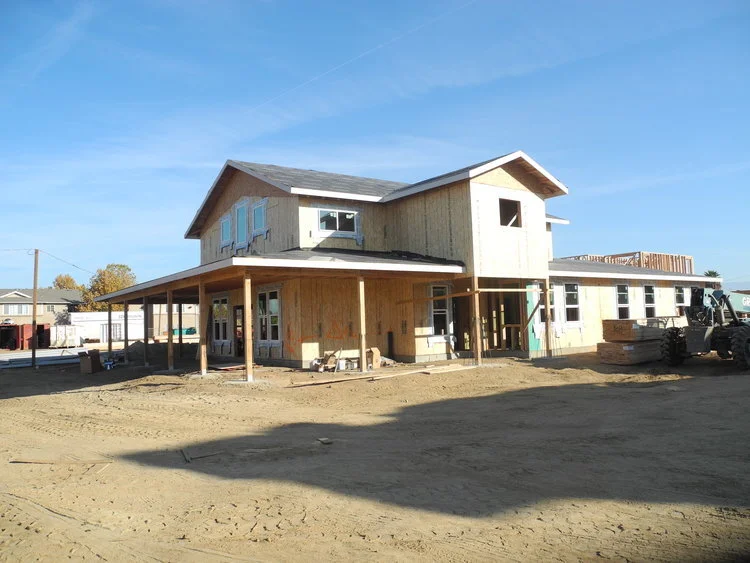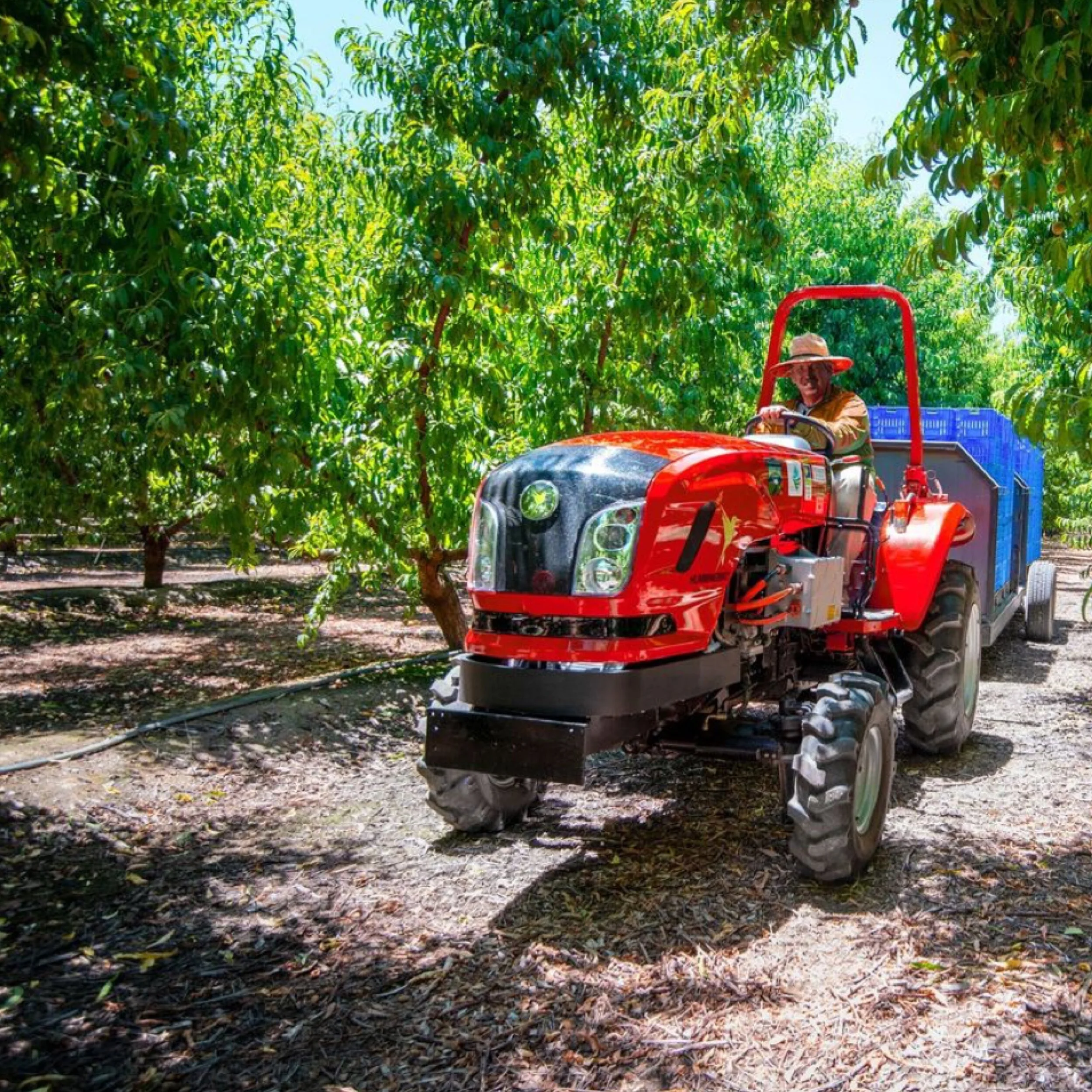Where the redwoods meet the sea in Northern California’s Humboldt and Del Norte counties, Blake and Stephanie Alexandre, fourth-generation dairy farmers, received a $750,000 grant from CDFA to implement an Alternative Manure Management project.
Improving Efficiency and Reducing Emissions through Alternative Manure Management
Dennis DaSilva is a second-generation California dairy farmer whose parents began the family’s first dairy farm in 1983 with 150 cows. The $375,000 grant has allowed Mr. DaSilva to replace an existing solid separation system with a new, more efficient manure separator and concrete pad. Separated manure is dried and composted on the concrete pad and is then used for bedding and fertilizer for forage crops.
Adaptive Reuse Brings Affordable Housing, Walkability, and Community Arts Space to Santa Ana
In June 2020, artists, their families, and low‑income earners in Santa Ana began moving into new affordable homes funded in part by a $12 million award from California Climate Investments through the Affordable Housing and Sustainable Communities program. In partnership with the Southern California Association of Governments, the Santa Ana Arts Collective development promotes sustainability and health through active transportation safety activities, supported by over .5 miles of bicycle facility improvements and 36 improved pedestrian crossings. The project also features a gallery space for resident and community artists, and Meta Housing is partnering with Western Community Housing to deliver on‑site adult education services.
Activating Downtown Redding Through Walking, Biking, and Affordable Housing
Building Affordable Housing and Transportation Improvements in Dinuba
As early as this summer, Sierra Village will offer 44 affordable homes with easy access to bike lanes and sidewalks in the rural community of Dinuba. This apartment rental community will not only bring an affordable housing option to hardworking low-income families, but it will also feature a vanpool program and other transportation improvements, solar and water conservation features — all of which are designed to reduce GHG emissions.
Agricultural Worker Vanpool Pilot Project in the San Joaquin Valley
Linking Transit and Active Transportation with New Affordable Housing in Riverside
The Mission Heritage Plaza project is using $16.8 million to help local partners build 71 new energy-efficient, affordable homes in downtown Riverside. The project will also plant over 200 new trees, provide two miles of new bike lanes, and create a multi-modal transit hub that links local and regional transit systems in one convenient location.
Electric Tractor Demonstration Supports Market Development and Pollution Reduction
Project Clean Air, Inc., in collaboration with several partners, is implementing the San Joaquin Valley Electric Tractor Development and Demonstration project. Supported by $1.5 million in California Climate Investments funding, the project’s goals are to design, customize, develop, and test the first all‑electric agriculture tractors with in-field mobile charging supporting electric Class 6 trucks in California. By demonstrating the functionality of this fleet of electric vehicles, this project will help create a market for electric agricultural and freight equipment.
Energy Efficiency Measures Bring Savings and Comfort to Orange County Residents
Jose, a senior citizen whose home is located in Southern California, was having difficulties paying his electricity bill. The final straw came one day in April 2016 when he received a notice from Anaheim Public Utilities stating that his electricity service would be disconnected if he did not pay his overdue balance of $292.57 by close of business—a situation that led him to seek assistance.
Keeping Fire on the Landscape: Maintaining Carbon Balance and Forest Resilience
At the University of California’s Blodgett Forest Research Station in the central Sierra Nevada Mountains, the long running Fire and Fire Surrogate study has provided critical information to forest managers and landowners on the use of prescribed fire and restoration thinning. With a $454,772 grant from California Climate Investments through the California Department of Forestry and Fire Protection’s Forest Health Research Program, Dr. John Battles, Dr. Scott Stephens, and other researchers are continuing this important work with an eye towards understanding the value of repeated application of fuel reduction treatments on Sierra Nevada mixed‑conifer forests. Forest managers and landowners throughout the state and beyond will be able to use the results of this study to inform their management actions and policy decisions in the face of warming climate and increasing wildfires.
Forest Treatment Research in the Teakettle Experimental Forest
The “Teakettle Experiment” continues important work that began over 20 years ago to quantify the effects of prescribed fire and thinning on the ecosystem in the Teakettle Experimental Forest in the southern Sierra Nevada Mountains. This long-term research project is examining six different treatment options, including different intensities of thinning and prescribed fire.
Enhancing Forest Resilience in Modoc County
In collaboration with forest industry and utility partners and the Modoc National Forest, the Pit Resource Conservation District is implementing a $5 million California Climate Investments Forest Health grant to increase forest resilience in Modoc County. The fuels reduction and prescribed fire activities funded by this project will take place on public and private lands to increase forest resilience, accelerate reforestation of severely burned forests, and reduce the risk of future catastrophic fire impacts to local communities, ecosystems, and natural resources. This project complements efforts by state, federal, and local agencies to increase the pace and scale of fuel treatments in California’s forests.
Governor's Priority Project Reduces Wildfire Risk in the Ukiah Valley
The Ukiah Emergency Fuels Reduction Project is performing vegetation management activities along ridgetops in strategic locations for firefighting and protecting critical infrastructure. The project built 14 miles of shaded fuel breaks at the edges of densely populated housing in Ukiah and the forested mountains that surround the Ukiah Valley.
Restoring Watersheds Damaged by the King Fire
Replanting and restoration are underway a few thousand acres at a time, and the California Climate Investment program is helping bring the King Fire area back to life. $1.9 million from the State’s Cap-and-Trade auctions is being put to work on CAL FIRE’s King Fire Rehabilitation and Reforestation Project.

















